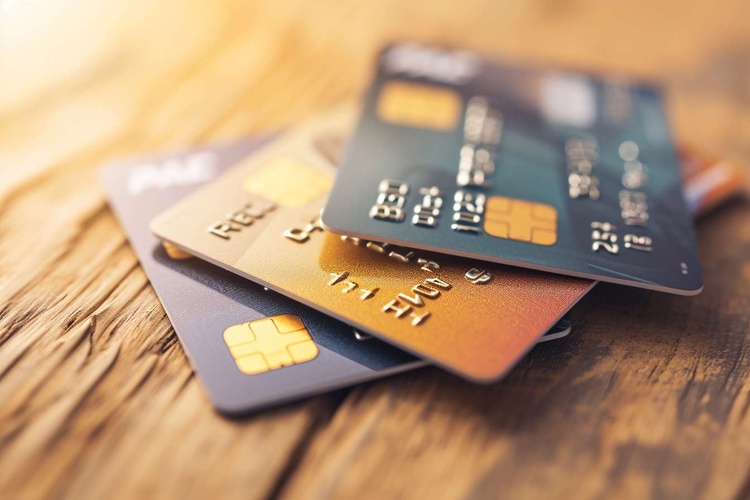Smart Credit Card Guide: Mastering Fees & Rewards
Navigate credit cards confidently with this practical guide. Learn how interest and common fees work, how to build and protect your credit score, and how to choose cards that match your spending habits. Discover tips for maximizing rewards, avoiding costly debt, and using security features to minimize fraud—ideal for anyone seeking smarter financial management with credit cards.

How Credit Card Interest and Fees Work
Credit cards let you buy now and pay later, but borrowing comes with costs. The primary expense is interest, usually expressed as the Annual Percentage Rate (APR). Typical card APRs vary widely — often between roughly 13% and 25% — depending on factors like your credit history and prevailing market rates. In addition to interest, issuers may charge various fees that can add up if you’re not careful.
Common fees include annual fees for premium perks, penalties for missed payments, costs for transferring balances from one card to another, and charges when using your card abroad. Knowing which fees apply to your account and how they’re calculated helps you avoid unpleasant surprises and manage costs more effectively.
| Fee Type | Typical Range | Notes |
|---|---|---|
| Annual Fee | $0–$550 | Often higher for premium travel and luxury cards |
| Late Payment Fee | $25–$40 | Can increase with repeated late payments |
| Balance Transfer Fee | 3–5% | Charged on the amount moved between cards |
| Foreign Transaction Fee | 0–3% | Many travel-focused cards waive this fee |
Prices, rates, or cost estimates mentioned in this article are based on the latest available information but may change over time. Independent research is advised before making financial decisions.
Building and Maintaining Good Credit
Using a credit card responsibly is one of the fastest ways to build a solid credit profile. Two especially important behaviors are making payments on time and keeping your credit utilization low. Credit utilization is the percentage of your available credit that you’re using; staying below about 30% is a common guideline to help maintain a healthy score.
Small, consistent actions contribute significantly over time. Pay at least the minimum due each month, but whenever possible pay the full statement balance to avoid interest charges. Periodically review your credit reports to spot errors or unfamiliar accounts, and correct issues early to prevent long-term damage to your credit history.
Choosing and Maximizing Rewards
Credit cards now come with a wide variety of reward structures and perks. The main types of rewards include cash back (often 1–5% on purchases), travel points or miles, and targeted bonus categories like groceries or gas. When selecting a card, match rewards to your spending patterns: frequent travelers may benefit from travel cards with lounge access and waived foreign fees, while everyday spenders may prefer straightforward cash-back cards.
Evaluate more than the rewards rate. Consider sign-up bonuses, annual fees, redemption options, and the value of perks such as purchase protection, extended warranties, or rental car insurance. Some cards offer rotating bonus categories or elevated earnings on specific merchants; choose a card that aligns with where you actually spend money.
Security Features and Fraud Protection
Modern credit cards include multiple safeguards to reduce fraud risk. EMV chip technology makes in-person transactions more secure, and many issuers provide zero-liability policies that protect you from unauthorized charges. Real-time transaction monitoring can trigger instant alerts when suspicious activity is detected, and many issuers let you freeze or lock a lost card with a tap in their app.
Virtual card numbers and mobile wallets add extra layers of protection for online shopping by masking your primary account number. When combined with good personal security habits — unique passwords, two-factor authentication, and careful review of your monthly statements — these features make credit cards a safer payment option than carrying large amounts of cash.
Practical Strategies to Manage Card Debt
Credit cards are powerful tools but can become costly if balances grow. Adopt a few disciplined practices to keep debt under control:
- Aim to pay your full balance each statement cycle to avoid finance charges.
- Set up automatic payments for at least the minimum amount to avoid late fees and missed payments.
- Monitor statements regularly for errors and unauthorized charges.
- Keep utilization low by spreading spending across multiple cards or requesting higher limits when appropriate.
- Create a savings plan for large purchases so you don’t rely solely on revolving credit.
- Understand all terms in your card agreement, including grace periods, penalty APRs, and how interest accrues.
If you find yourself carrying high-interest balances, consider options like a 0% APR balance transfer offer (but watch out for transfer fees) or a personal loan with a lower rate to consolidate debt. Addressing debt early prevents interest from compounding and protects your credit score.
Putting It All Together
Credit cards offer convenience, added protections, and valuable rewards when used wisely. Learn the costs associated with each card, monitor your spending and statements, and choose products that fit your habits. Prioritize on-time payments and low utilization to build credit, and use issuer security tools to reduce fraud risk. Treat credit as a financial instrument—not extra income—and you’ll be able to harness its benefits while minimizing the risks and costs.
With informed choices and consistent habits, credit cards can be a safe, rewarding part of your personal finance toolkit. Take the time to compare offers, understand the fine print, and plan your use so you’re getting value without paying unnecessary fees or interest.






